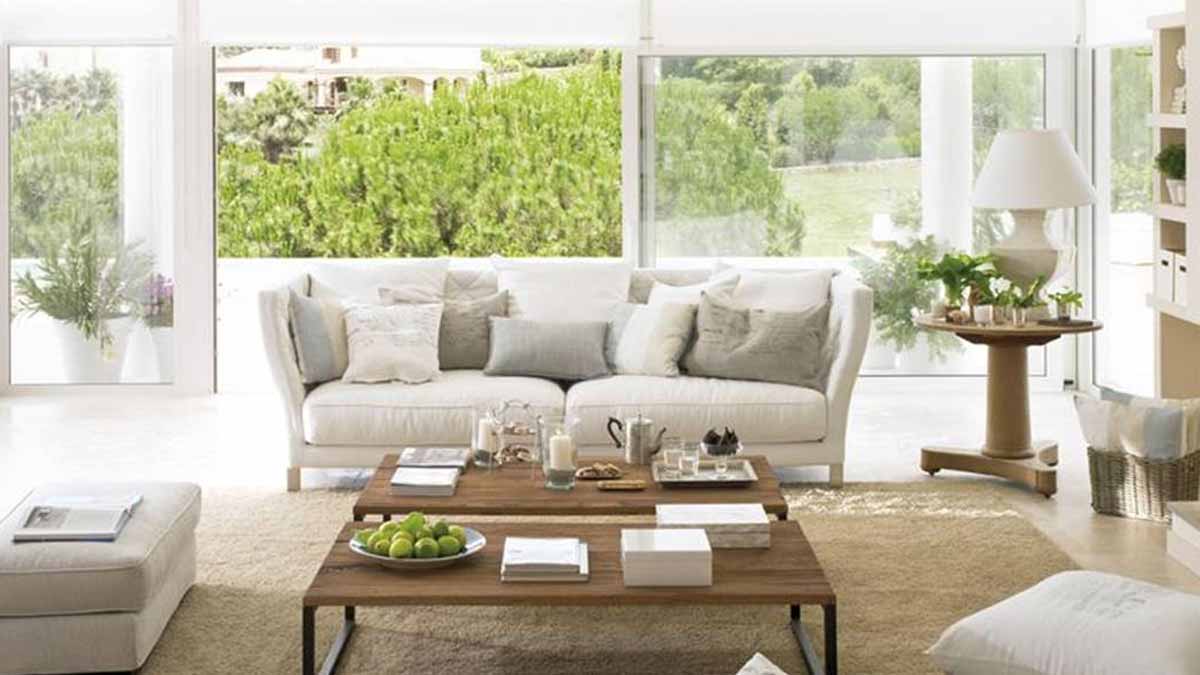Your sliding door deserves more than a dated cover. Style shifts as homes celebrate height, light, and softness. Designer Nate Berkus offers a path: replace hard slats with drapery. Hang rods near the ceiling so the eye rises and the room feels taller. Full panels flank the opening or stack to one side effortlessly. The era of Vertical Blinds fades as layered curtains deliver warmth, flow, and a polished finish.
Why Vertical Blinds lost favor and what replaces them
Once the favorite of the ’80s and ’90s, vertical strips suited tall windows and sliding doors because clean lines ruled. Tastes shifted toward softness and height, so Nate Berkus recommends drapery panels instead. Mount rods near the ceiling, then frame the door with two panels or stack to one side.
Mount rods high so the eye travels upward and the room gains height. Avoid hardware right above the frame because it cuts the sightline. Aim for the top of the wall or the highest point. Layer sheers on a second rod to add more warmth, softness, light, and subtle depth.
Berkus told The Washington Post that fabric verticals feel dated, while drapery brings a layered, elegant effect. He urges mounting rods from the top of the wall so the sightline lifts and ceilings seem taller. His Instagram note echoes this rule because low placements shorten walls and shrink proportion visually.
Mount high, plan stack-back, keep doors functional
Place the rod near the ceiling so panels raise the sightline and add presence. Measure carefully from rod to floor because the hem should skim, not puddle. Berkus prefers drapes hovering about ¼ inch above the floor. That keeps movement easy while still looking tailored, clean, balanced, and visually refined.
Plan for stack-back so doors slide freely while the room stays balanced. With wall space on both sides, place a pair of panels that flank the opening, because symmetry calms the view. If space is tight, design the drapery to stack to one side without blocking handles or traffic flow.
Daily function matters because doors move often while families live around them. Ripple-fold or inverted-pleat panels glide smoothly on rings attached to a slim rod, so operation stays light. This setup feels cleaner than Vertical Blinds. The thin hardware keeps sightlines open and lets light wash across the room.
Fullness, layers, and light for taller rooms
Choose generous fullness so panels look substantial and hang in clean, even waves. Ripple folds or inverted pleats give a tailored line because they keep the stack compact. Avoid puddling since it complicates cleaning and snags easily. A near-floor skim reads refined and keeps door clearance effortless every day.
Layer sheers on a second rod so daylight diffuses and privacy remains flexible. The effect adds warmth and depth while softening views, because harsh lines fade behind fabric. When you want clarity, pull the sheers aside. When you want separation, close them while leaving panels open to frame the doorway.
Simple hardware supports the look because a slim rod and rings feel quiet and modern. This restraint keeps focus on fabric movement rather than busy mechanics. If you like saving, consider DIY rods that fit your space. You get custom scale, reduced cost, and a cleaner result than Vertical Blinds.
Vertical Blinds had their moment, drapery owns today
In the ’80s and ’90s, vertical strips fit the moment because minimal hardware and crisp lines felt fresh. Tall windows and sliding doors gained coverage with simple tracks that turned and stacked. Homes changed, though, as people sought warmth, texture, and height, so soft panels replaced rigid vanes across rooms.
According to The Washington Post, Berkus stresses mounting rods high so your eye goes up. Low placements cut the wall because they interrupt the vertical line. He repeats the guidance again on Instagram. Starting from the top of the wall immediately increases height and makes proportions look correct.
Keep hardware simple so the composition feels quiet and refined. Rings on a thin rod move smoothly while keeping sightlines open across glass, because bulk distracts from the view. Confirm width, stack area, and bracket placement in advance. Planning prevents crowding at handles and keeps panels gliding without drag.
Fabric, pleats, and hardware that last
Pick fabrics with body so waves hold their shape across daily use. Performance weaves resist fading and clean easily, which helps in bright exposures. Inverted pleats or ripple folds read contemporary while stacking neatly, so doors clear. Their rhythm feels calm and pairs well with slender rods and minimal finials.
Use color and texture to set tone because sliding doors read large. Sheers soften glare, while lined panels add privacy and insulation so rooms stay stable year-round. This layered approach gives richer depth than Vertical Blinds, and the fabric surface absorbs sound. That significantly reduces echo during conversations by glass.
Working on a tight budget, consider simple rods with small rings and brackets. Off-the-shelf parts deliver a clean line, while DIY options can scale wider openings because materials and lengths are flexible. Either route supports movement, keeps hardware quiet, and lets the fabric composition deliver the room’s style statement confidently.
High, simple drapery brings polish and ease
Follow Berkus’s guidance confidently because it blends function with style. Mount rods near the ceiling so the eye rises. Use fuller panels that skim the floor and glide without fuss. Layer sheers for light control and warmth. Simple rings on a rod keep views open. With these choices, Vertical Blinds make way for taller lines and quieter hardware. Sliding doors feel current, welcoming, and easy to live with.
